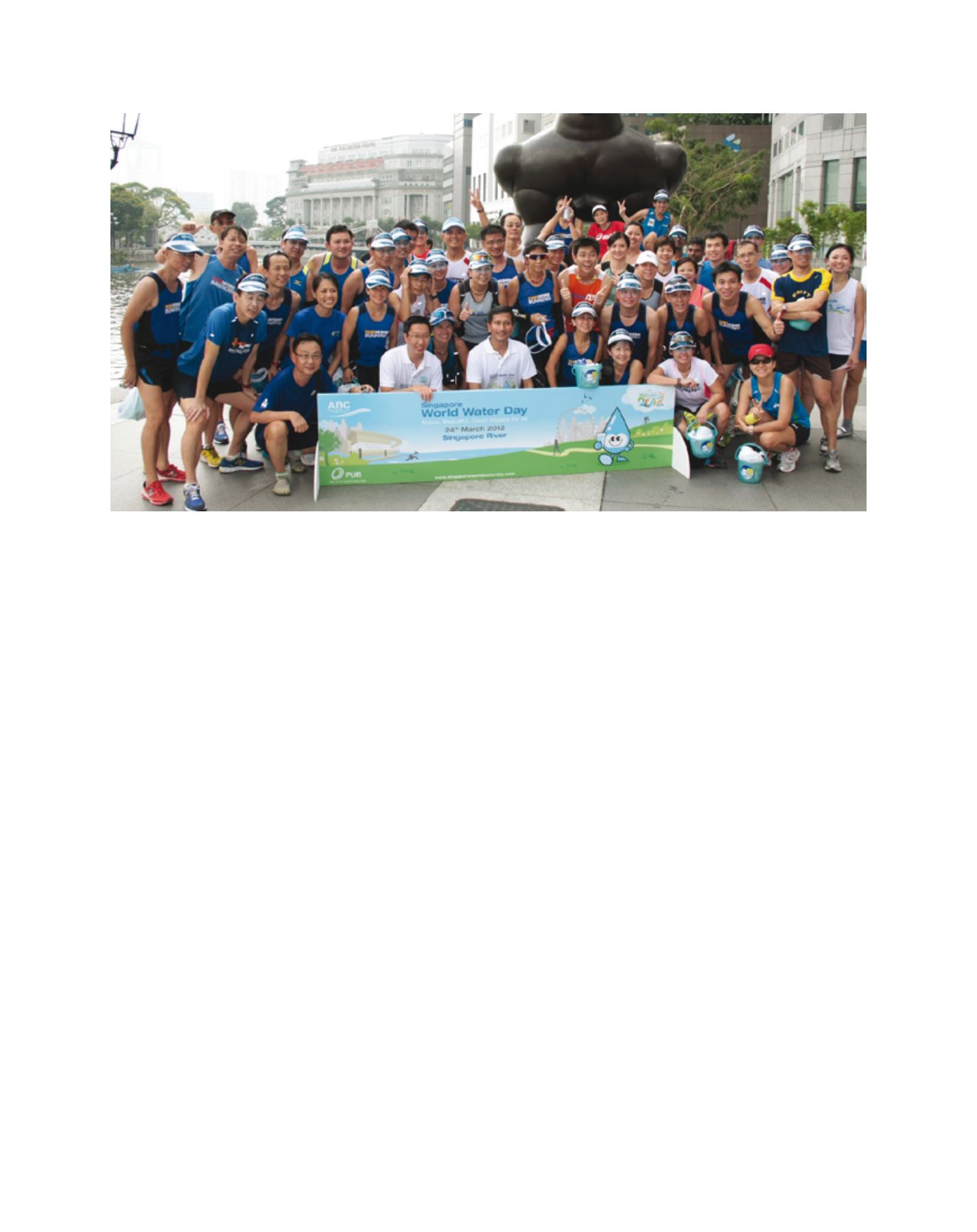

[
] 272
E
conomic
D
evelopment
and
W
ater
PUB therefore works closely with companies like
Keppel Seghers and Siemens, and research institu-
tions such as the Nanyang Environment and Water
Research Institute and the NUS Environmental
Research Institute, with the long-term goal of reduc-
ing the energy consumed during desalination as much
as possible. This will strengthen the viability of desali-
nated water as an affordable water source not just for
Singapore, but for the world.
Cooperation is a double coincidence of wants
: PUB also
works closely with the global water industry to come up
with new, innovative ideas that may make a difference
to the water world. It encourages water companies to
leverage Singapore as a ‘living laboratory’ to test-bed and
commercialize cutting-edge technology. PUB opens its
facilities for companies to test-bed their technologies
under actual site conditions, which will help fast-track
the commercialization of their technologies. This also
helps PUB to assess the latest technologies that are suit-
able to solve its water challenges.
Cooperation is about building relationships
: Through
advances in communication technology, the world as
we know it is getting smaller. Many people are now
a phone call, text message or e-mail away. Singapore
has established friendships with many other countries
facing water challenges through PUB’s sharing of its
urban water management knowledge. In partnership
with organizations such as the Singapore Cooperation
Enterprise and Temasek Foundation, PUB has assisted
other nations such as the Government of Mauritius
and India’s Delhi Jal Board in areas such as non-reve-
nue water, water reuse and community engagement.
PUB’s experience in water management over the years shows that
technology and research and development (R&D) were key to over-
coming Singapore’s natural vulnerabilities and achieving an adequate
and secure water supply. For example, NEWater and desalination
were made possible by technological breakthroughs following
decades of research efforts. R&D will continue to be vital in ensur-
ing a sustainable water supply for the future. With the challenges
of climate change effects and increasing energy costs, governments
and water utilities must find innovative ways to contain the rising
costs of treating and producing water and identifying new sources.
This is where water cooperation can bring about several benefits.
Cooperation is about short circuiting the solutions development process
:
Sir Isaac Newton once said: “If I have seen farther, it is by standing
on the shoulders of giants.” As countries develop at different paces,
some may encounter the same issues that others have faced before.
For example, as part of the NEWater development process, Singapore
looked to the United States, where reclaimed water was already used
in places such as California and Arizona to replenish underground
aquifers and surface reservoirs. The opportunity to learn from others
around the world was instrumental to Singapore’s success in develop-
ing NEWater as a viable source of water. Today, NEWater, or recycled
used water, can meet 30 per cent of Singapore’s total water needs, and
that figure is expected to reach up to 55 per cent by 2060.
Cooperation is about finding solutions to meet new challenges
: According
to the International Desalination Association Desalination Yearbook
2009-2010, there are almost 15,000 desalination plants worldwide.
Among Singapore’s four sources of water, desalinated water is the most
expensive source due to its high energy requirement and the increasing
costs of energy. As pointed out by Dr Vivian Balakrishnan, Minister
for the Environment and Water Resources, Singapore, “Singapore has
translated a dependence onwater into a dependence on energy.” Finding
ways to reduce energy costs represents one of PUB’s biggest challenges.
Dr Vivian Balakrishnan, Minister for the Environment and Water Resources, Singapore and Mr Chew Men Leong, Chief Executive, PUB Singapore (centre, both in
white) posing for pictures with the community after engaging in water activities by the Singapore River during World Water Day 2012
Image: PUB


















